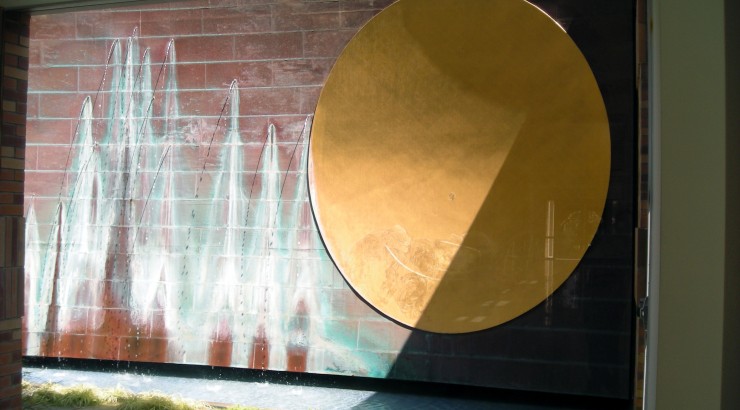Lita Albuquerque
March 7, 2016
Lita Albuquerque was born in 1946 to a single mother, and her art is strongly influenced by her experience growing up without a father figure. However, she also draws influence from the very interesting life of her mother. In the 1930’s, Lita’s mother published her own plays in Paris under a man’s name, all the while serving as a prominent figure in the underground lesbian movement there. Eventually, she fell in love with the wife of a diamond dealer, and he in turn fell in love with her. Naturally, this resulted in the three of them moving to Hollywood to live together as a family. However, this fantasy family life was short lived; directly after Lita was born, her father left with his wife to go back to Paris and Lita was moved, with her mother and brother, to Tunisia. Growing up in a convent in the city of Carthage, Lita would watch the ships come into harbor and fantasize about her father coming home one day on one of them. Her mother’s dedication to her children allowed them to return to America, settling permanently in Santa Monica, California.
From a young age, Lita was inspired by poetry, and it wasn’t until later in her life that she began painting. Her career as an artist accelerated in the late 1970s when she gained notable national attention with her ephemeral pigment instillation, and again in the 1980’s when she gained international attention with the Washington Monument Project. All of Lita’s Ephemeral artwork is inspired by the environment and landscape, incorporating the land into her instillation. One of Lita Albuquerque’s most influential and notable ephemeral art pieces is called Sol Star, which was created in 1996 on the Giza Plateau in Cairo. This work of art linked the stars in the sky above with a blue circle of pigment on the ground beneath. The concept was inspired by Plato’s theory that every soul comes from a star and goes back to a star. While in Egypt, Lita worked with the idea of the honeycomb pattern as a symbol of the honeybee and lower Egypt. During this time, she was mistakenly arrested as a Jewish spy, although was released shortly after the arrest. The honeybee symbolism was later tied into her interpretation of Plato and is symbolic of the carrier of the soul.
Stellar Score, commissioned for Chapman University in 2004, again links the cosmos to earth. The combination of gold leaf, running water, and a patina in the metal creates a surreal feeling of timelessness similar to that of the universe. Lita Albuquerque states that “the prize of life is consciousness.” This interpretation of life is representative of her unique sense of consciousness and mind, allowing her to create art unlike any other artist.



